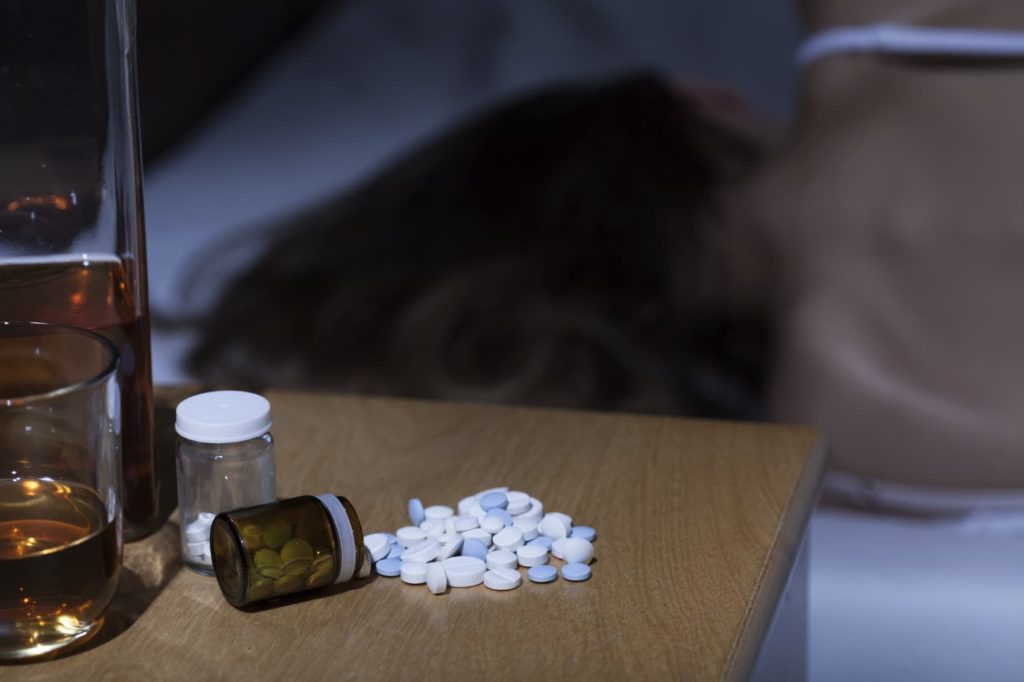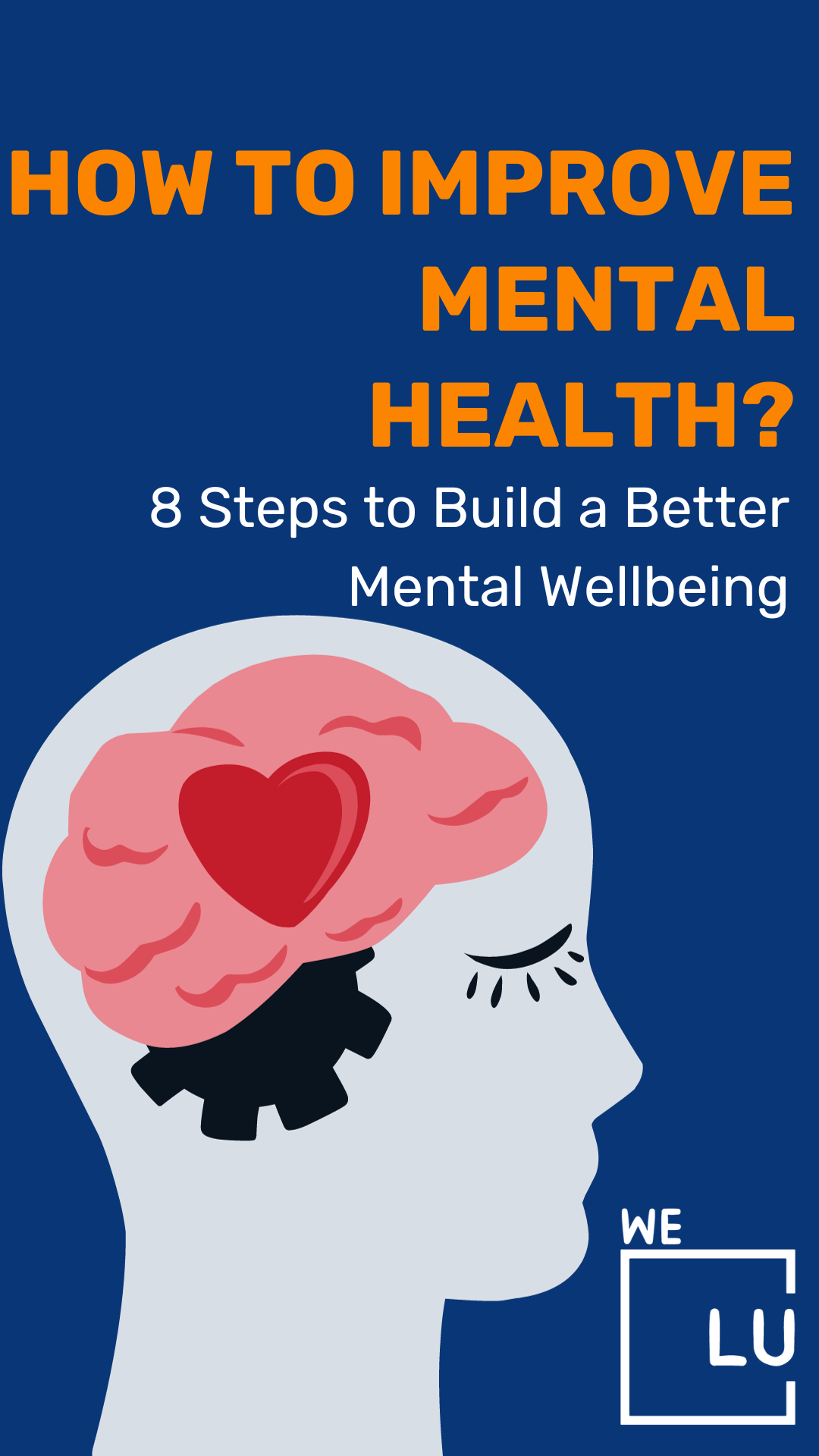Valium Withdrawals Symptoms and Valium for Alcohol Withdrawal
Benzodiazepines ameliorate or prevent the symptoms and complications of moderate to severe alcohol withdrawal, which can include autonomic hyperactivity, agitation, combativeness, hallucinations, seizures, delirium, and death. The benzodiazepines most commonly used for this purpose are lorazepam (Ativan), chlordiazepoxide (Librium), oxazepam, and diazepam (Valium).
However, any patient who has taken a benzodiazepine, such as Valium, for longer than 3–4 weeks is likely to have withdrawal symptoms if the drug is ceased abruptly. The risk of inducing dependence can be reduced by issuing prescriptions limited to 1–2 weeks’ supply.
Benzodiazepine-related problems include diversion, misuse, dependency, driving impairment, and morbidity and mortality related to overdose and withdrawal. Older patients have been associated with cognitive decline, dementia, and falls. There is evidence of increased mortality with long-term use.
Despite a modest decrease in the annual number of benzodiazepine prescriptions dispensed, including Valium, the current level of prescribing probably represents significant overuse. The management of dependence involves either gradual benzodiazepine withdrawal or maintenance benzo addiction treatment. Prescribing interventions, substitution, psychotherapies, and pharmacotherapies can all contribute.
What is Valium?
Diazepam, most commonly recognized under the trade name Valium (but it is also sold under a large number of other trade names), is a member of the benzodiazepine medication class.
Valium is one of the best-recognized drugs in the world and at one time was the best-selling drug in the United States. It is used for anxiety treatment, treat withdrawal syndromes to other benzodiazepines and alcohol, manage seizures, treat restless leg syndrome, treat muscle spasms, and in the treatment of insomnia. Due to its high potential for abuse and addiction, it is no longer a first-line choice in the treatment of anxiety but continues to be used for several treatment options.
Valium is an addictive Benzodiazepine with longer-lasting effects than other drugs in its class. Valium addiction can progress quickly if the drug is used in a way not directed by a doctor. Over time, it is harder for a Valium abuser’s brain to function normally without the drug. Yet some people addicted to Valium may not even realize they have a problem.
Taking Valium for longer than 4-6 weeks, even with a prescription from a doctor, increases the likelihood of becoming addicted. One of the telltale symptoms of Valium addiction is needing larger doses to feel the drug’s effects. Other signs of Valium addiction include:
- Strong cravings for the drug
- Isolation from family and friends
- Continued use despite problems caused by the drug
- Loss of interest in once enjoyable activities
- Ignoring obligations
Once a user has a tolerance to Valium’s effects, they could also have Valium withdrawal symptoms if they stop taking it. Valium withdrawals can be dangerous and uncomfortable, which makes it hard for addicted people to quit on their own. The symptoms of Valium withdrawal are intense, and many people addicted to Valium need the drug to feel normal. About 1-4 days following a person’s last use of Valium, the individual will begin to experience the effects of acute Valium withdrawals.

Valium Withdrawals Symptoms
The duration of weaning depends on tolerability and the starting dose. While not specifying a withdrawal period, most studies in primary care have found that gradual withdrawal over at least 10 weeks is successful in achieving long-term abstinence.
Physical Symptoms of Withdrawal from Valium
Physical symptoms can include combinations of headaches, nausea, vomiting, stomach pains, cramps, and even tremors (most often, these tremors will occur in the hands).
Cardiovascular Symptoms of Valium Withdrawals
Cardiovascular symptoms could be associated with rebound anxiety or just be part of the general withdrawal process (increased blood pressure, increased heart rate, and so forth).
Neurological Valium Benzodiazepine Withdrawal
Neurological symptoms, such as confusion and the potential to develop seizures (the occurrence of seizures during the acute phase of withdrawal is a serious condition that can be potentially fatal and needs immediate medical attention).
Psychological Withdrawal Symptoms of Valium
Psychological symptoms can include cravings, mood swings, depression, panic attacks, and rebound anxiety.

Skip To:
Learn More:

Get Your Life Back
Find Hope & Recovery. Get Safe Comfortable Detox, Addiction Rehab & Dual Diagnosis High-Quality Care.
Hotline(844) 597-1011Valium (Diazepam) Drug Facts
Diazepam (Valium)
Diazepam is a benzodiazepine medication that is FDA approved for the management of anxiety disorders, short-term relief of anxiety symptoms, spasticity associated with upper motor neuron disorders, adjunct therapy for muscle spasms, preoperative anxiety relief, management of certain refractory epilepsy patients, and adjunct in severe recurrent convulsive seizures, and an adjunct in status epilepticus.
Indications
Diazepam is an anxiolytic benzodiazepine, first patented and marketed in the United States in 1963. It is a fast-acting, long-lasting benzodiazepine commonly used to treat anxiety disorders and alcohol detoxification, acute recurrent seizures, severe muscle spasms, and spasticity associated with neurologic disorders. In valium taper for alcohol withdrawal, diazepam is useful for symptomatic relief of agitation, tremor, alcoholic hallucinosis, and acute delirium tremens.
Mechanism of Action
Benzodiazepines exert their effects by facilitating the activity of gamma-aminobutyric acid(GABA) at various sites. Specifically, benzodiazepines bind at an allosteric site at the interface between the alpha and gamma subunits on GABA-A receptor chloride ion channels. The allosteric binding of diazepam at the GABA-A receptor increases the frequency at which the chloride channel opens, leading to an increased conductance of chloride ions. This shift in charge leads to a hyperpolarization of the neuronal membrane and reduced neuronal excitability.
Pharmacokinetics
Absorption: After oral administration of diazepam >90% is absorbed, the average time to achieve peak plasma concentrations is 1 to 1.5 hours. Absorption is delayed and decreased when administered with a meal. There is an increase in the mean time to achieve peak concentrations to approximately 2.5 hours in the presence of food.
Distribution: Diazepam is highly lipophilic. While there is a moderately quick onset of action, the drug quickly redistributes. Diazepam and its metabolites have high plasma protein binding.(diazepam 98%). Diazepam and metabolites penetrate the blood-brain and placental barriers and are found in breast milk. The volume of distribution is 0.8 to 1.0 L/kg.
Metabolism: Diazepam is mostly broken down by the microsomal enzymes CYP2C19 and CYP3A4 enzymes to several active metabolites, mainly desmethyldiazepam. Other minor active metabolites include oxazepam and temazepam. The average half-lives of oral diazepam and desmethyldiazepam are about 46 and 100 hours, respectively.
Excretion: The initial distribution is followed by a prolonged terminal elimination(half-life ~ 48 hours). Additionally, the terminal elimination half-life of the active metabolite N-desmethyldiazepam is up to 100 hours. Diazepam and its metabolites are excreted predominantly in the urine. Diazepam accumulates upon multiple dosing; consequently, the terminal elimination half-life of diazepam is slightly prolonged.[6]
Is Valium Addictive? Valium Addiction Statistics
Over the past two decades, the number of substance abuse cases related to Valium and other benzodiazepines has tripled to over 100,000 cases of treatment admissions. Valium is often abused when taken in conjunction with other drugs, medications, alcohol, or other possibly illegal substances. This can cause severe and even lethal repercussions for the patient or the abuser. This is why Valium is considered to be a controlled substance and should only be taken as directed.
33%
About 33 percent of the elderly population has been prescribed some kind of benzo medication like Valium for anxiety or sleep-related issues.
Source: NIDA
50 million
More than 50 million prescriptions for drugs like Valium and other benzos are written each year in the United States.
Source: NIDA
30%
Recent Valium abuse statistics show that nearly 30 percent of all related deaths from pharmaceutical medications like Valium and other benzodiazepines and 75 percent of overdose deaths were not intentional.
Source: NIDA
Get Help. Get Better. Get Your Life Back.
Searching for Accredited Drug and Alcohol Rehab Centers Near You?
Even if you have failed previously and relapsed, or are in the middle of a difficult crisis, we stand ready to support you. Our trusted behavioral health specialists will not give up on you. When you feel ready or just want someone to speak to about therapy alternatives to change your life call us. Even if we cannot assist you, we will lead you to wherever you can get support. There is no obligation. Call our hotline today.
(844) 597-1011Side Effects of Valium Withdrawals & Valium Withdrawals Timeline
People who demonstrate withdrawal from Valium may or may not qualify for an abuse or addiction diagnosis; however, the withdrawal process follows a relatively similar progression in most individuals, with some deviation due to individual differences.
Withdrawal from benzodiazepines has been described in research literature based on the clinical observations of patients’ benzodiazepine addictions. The classic and most enduring model of Valium/benzodiazepine withdrawal is a stage model that includes two basic withdrawal stages. The stages are differentiated by the number and intensity of the symptoms and their length.
Acute Stage of Valium Withdrawals
About 1-4 days following a person’s last use of Valium, the individual will begin to experience the effects of acute withdrawal. Valium has a variable half-life that can be as high as 48 hours, so for some individuals, there may be no significant symptoms for a day or so, but by day 3-4, the person will begin to experience acute withdrawal symptoms.
The determination of how soon after stopping Valium these symptoms will appear depends on how much and how often the person took Valium, the length of time Valium was abused, whether or not other drugs were also abused, and individual differences in metabolism and emotional and psychological stability. For instance, some individuals who are prone to anxiety and depression may begin to experience rebound anxiety (a return of the anxiety that was present before the person started taking the drug) after a relatively short period of not using Valium.
General Valium Withdrawals
After a period of 3-4 days of acute symptoms, the person will tend to experience a more lengthy withdrawal phase that will continue for 10-14 days in most cases. During this period, the person will experience increased cravings for Valium, lightheadedness, mild headache, mild fever, periods of nausea, potential chills, depression, and continuing bouts of anxiety.
These symptoms will be significantly less intense than the acute symptoms. In general, the person will experience flulike symptoms, general feelings of dissatisfaction, and an overall sense of melancholy. In some individuals, there may be an additional period of rebound anxiety between 10 and 14 days.
Following the withdrawal period, individuals will slowly stabilize but may still experience issues with anxiety and depression, and general feelings of being “out of sync.”

Certain references also refer to post-acute withdrawal syndrome, which is a longer period of more generalized psychological symptoms that may occur in some individuals following recovery from drug abuse. The symptoms are typically described as issues with mood, irritability, problems experiencing pleasure to the same extent that one was able to experience pleasure prior to drug abuse, and general feelings of dissatisfaction and variable motivation.
Post-acute withdrawal syndrome has been characterized as a lengthy period that can last from weeks to years that requires ongoing treatment (mostly in the form of therapy); otherwise, it can lead to an increased potential for relapse. The syndrome is not universally accepted among addiction researchers and mental health workers.
Understanding the withdrawal process from Valium is important because individuals who are going through withdrawal are at a higher risk for relapse. The sudden appearance of rebound anxiety and physical symptoms can be almost immediately countered if the individual begins to take Valium again. This makes it extremely difficult for individuals to discontinue Valium “cold turkey” on their own without professional assistance.
First-class Facilities & Amenities
World-class High-Quality Addiction & Mental Health Rehabilitation Treatment
Rehab Centers TourRenowned Addiction Centers. Serene Private Facilities. Inpatient rehab programs vary.
Addiction Helpline(844) 597-1011Proven recovery success experience, backed by a Team w/ History of:
15+
Years of Unified Experience
100s
5-Star Reviews Across Our Centers
10K
Recovery Success Stories Across Our Network
- Low Patient to Therapist Ratio
- Onsite Medical Detox Center
- Comprehensive Dual-Diagnosis Treatment
- Complimentary Family & Alumni Programs
- Coaching, Recovery & Personal Development Events
Valium Dosage for Alcohol Withdrawal
Alcohol dependence is an increasing and pervasive problem. Alcohol withdrawal symptoms are a part of alcohol dependence syndrome and are commonly encountered in general hospital settings, in most departments. Alcohol withdrawal syndrome ranges from mild to severe. The severe complicated alcohol withdrawal may present with hallucinations, seizures, or delirium tremens. Benzodiazepines have the largest and the best evidence base in the treatment of alcohol withdrawal, and are considered the gold standard.
Diazepam is a prescription medicine used to treat the symptoms of anxiety, endoscopy, alcohol withdrawal, muscle spasms, seizure disorder, and sedation. Diazepam may be used alone or with other medications.
All subclasses of benzodiazepines appear to be equally effective in treating alcohol withdrawal syndrome. Therefore, choosing a benzodiazepine depends on the selection of preferred pharmacokinetic properties in relation to the patient being treated. The most commonly used benzodiazepines for alcohol detoxification are chlordiazepoxide, diazepam (Valium long-acting), lorazepam (Ativan), and oxazepam (short/intermediate-acting).
Experts suggested that long-acting agents like diazepam and chlordiazepoxide which have a greater half-life (i.e., for up to several days) can provide a smooth course of treatment without the risk of rebound symptoms (e.g. Seizures) that occur late during withdrawal as blood levels are reasonably uniform across the course of the day. However, a disadvantage of these two drugs is that the dependence on demethylation and hydroxylation metabolic pathways, the long half-lives, and the presence of active metabolites make it likely that drug accumulation will occur in patients with liver disease. The benzodiazepine equivalents for 5 mg diazepam are 25 mg chlordiazepoxide, 1 mg lorazepam and 15 mg oxazepam.
Valium vs Ativan for Alcohol Withdrawal
Short-acting (i.e., for several hours) benzodiazepines like lorazepam (Ativan) should be used in patients with severe liver dysfunction and in patients who are at high risk of experiencing serious medical consequences following sedation, such as people with severe lung disease or elderly patients as it has no active metabolites and its metabolism is not much affected in the liver. Short-acting benzodiazepines probably are efficacious as well but are associated with a greater risk of rebound symptoms. To prevent the recurrence of withdrawal symptoms, these agents must be given in gradually decreasing doses/tapering doses before they can be discontinued.
Valium Detox Treatment
Valium detox is the process of getting the drugs out of the user’s body. The goal of Valium detox is to remove the drugs from the body while minimizing withdrawal symptoms.
Detoxing from Valium can be dangerous without medical guidance. Most Valium users who want to quit follow a detox program that gradually reduces their doses, usually on a weekly basis. This minimizes uncomfortable withdrawal symptoms and prevents dangerous complications such as seizures.
The severity of the addiction is the biggest factor in how long detox takes. Those who are more severely addicted take longer to detox because abruptly reducing their Valium doses causes harmful withdrawal symptoms.

Valium Detox Protocol
Valium is often used as a replacement medication to assist in the withdrawal from other benzodiazepines. Individuals with physical dependence on some other benzodiazepine would be administered Valium instead of that benzodiazepine and then the physician would slowly taper down the dosage to allow the person to adjust accordingly.
Once the dosage reaches a certain level, the medication is discontinued altogether, and the individual has managed to negotiate the withdrawal phase without experiencing serious effects. Likewise, physicians can initiate a tapering strategy for Valium for people who have a physical dependence on Valium. This may be the most effective strategy to negotiate withdrawal from physical dependence on Valium.
Other medications that might be used include the following:
- Selective serotonin reuptake inhibitors are antidepressant medications that have been shown to be useful in some instances in the withdrawal process from benzodiazepines and may be useful in addressing rebound anxiety.
Melatonin is a hormone that can ease symptoms of anxiety and induce sleep in some cases and may also address tolerance and withdrawal symptoms. Anticonvulsant medications would be used in the event that an individual develops seizures. Some anticonvulsants also appear to be useful in addressing the overall symptoms experienced during withdrawal from Valium.
The muscle relaxant baclofen (known by the brand names Kemstro, Gablofen, and Lioresal) has been demonstrated to reduce cravings for a number of different drugs of abuse, including benzodiazepines. Other specific medications for nausea, headache, and so forth can be added at a physician’s discretion.
How long does it take to detox from Valium withdrawals?
Valium detox time varies from person to person, but detox can last for weeks or months. Professional medical staff trained in detox procedures will tailor a detox program to each person depending on their prior Valium use and medical history. Someone who has used high doses of Valium for an extended period may need a longer detox process, as medical staff slowly taper off the dosage to limit withdrawal symptoms.
A recommended Valium tapering schedule involves decreasing the dose by 50% for the first two to four weeks, maintaining that dose for up to two months then reducing the dose by 25% every two weeks until usage is stopped. It is important to remember that Valium detox is an individual experience, so each person should not compare their detox experience to others’ experiences.
World-class, Accredited, 5-Star Reviewed, Effective Addiction & Mental Health Programs. Complete Behavioral Health Inpatient Rehab, Detox plus Co-occuring Disorders Therapy.
CALL(844) 597-1011End the Addiction Pain. End the Emotional Rollercoaster. Get Your Life Back. Start Drug, Alcohol & Dual Diagnosis Mental Health Treatment Now. Get Free No-obligation Guidance by Substance Abuse Specialists Who Understand Addiction & Mental Health Recovery & Know How to Help.
Reclaim Your Life Through Valium Detox Treatment Program
About 1-4 days following a person’s last use of Valium, the individual will begin to experience the effects of acute Valium withdrawals. People suffering from Valium addiction often put their addiction ahead of their professional and personal obligations. They are also likely to become unmotivated and lose interest in hobbies they once found pleasurable.
We Level Up rehab treatment and detox center can provide you, or someone you love, the tools to recover from this condition with a professional and safe detox process. Feel free to call us to speak with one of our counselors. We can inform you about this condition by giving you relevant information. Our specialists know what you are going through. Each call is private and confidential.
Top 3 Valium Withdrawals FAQs
-
How to start Valium taper for alcohol withdrawal?
A Valium taper by itself requires dose reductions of 5 percent, 10 percent, or 25 percent every week of a patient’s scheduled rehabilitation.
-
What happens in your brain when withdrawing from Valium?
One of the best ways to lower your chances of harmful withdrawal symptoms is to enter a professional treatment facility. Seizure is the most concerning medical complication of withdrawal because it can cause irreversible brain damage. In addition, if you experience a withdrawal-related seizure, you may be at higher risk for seizures if you withdraw from the drug again.
-
What are the benzodiazepines withdrawal symptoms of Xanax and Valium?
Both drugs belong to the class of drugs called benzodiazepines. Benzodiazepines are a type of medication known as tranquilizers. Withdrawal symptoms may vary from person to person, although there are some common symptoms. The symptoms of benzo withdrawal can vary, depending on many factors.
Experience Transformative Recovery at We Level Up Treatment Centers.
See our authentic success stories. Get inspired. Get the help you deserve.
Start a New Life
Begin with a free call to an addiction & behavioral health treatment advisor. Learn more about our dual-diagnosis programs. The We Level Up Treatment Center Network delivers recovery programs that vary by each treatment facility. Call to learn more.
- Personalized Care
- Caring Accountable Staff
- World-class Amenities
- Licensed & Accredited
- Renowned w/ 100s 5-Star Reviews
We’ll Call You
Search We Level Up Valium Withdrawals Detox, Mental Health Topics & Resources
Sources
[1] MedlinePlus. “Diazepam“.
[2] National Institute on Drug Abuse. “Prescription CNS Depressants.”
[3] National Center for Posttraumatic Stress Disorder. “Effective Treatments for PTSD: Helping Patients Taper from Benzodiazepines.” January 2015.
[4] World Health Organization. “Clinical Guidelines for Withdrawal Management and Treatment of Drug Dependence in Closed Settings.
[5] Fluyau D, Charlton TE. Drug Addiction. [Updated 2022 Aug 29]. In: StatPearls [Internet]. Treasure Island (FL): StatPearls Publishing; 2022 Jan-. Available from: https://www.ncbi.nlm.nih.gov/books/NBK549783/
[6-7] Justinova Z, Panlilio LV, Goldberg SR. Drug addiction. Curr Top Behav Neurosci. 2009;1:309-46. DOI: 10.1007/978-3-540-88955-7_13. PMID: 21104390; PMCID: PMC3039293
[8] McLellan AT. Substance Misuse and Substance Use Disorders: Why do they Matter in Healthcare? Trans Am Clin Climatol Assoc. 2017;128:112-130. PMID: 28790493; PMCID: PMC5525418.
[9] Justinova Z, Panlilio LV, Goldberg SR. Drug addiction. Curr Top Behav Neurosci. 2009;1:309-46. DOI: 10.1007/978-3-540-88955-7_13. PMID: 21104390; PMCID: PMC3039293.
[10] Jahan AR, Burgess DM. Substance Use Disorder. [Updated 2022 May 5]. In: StatPearls [Internet]. Treasure Island (FL): StatPearls Publishing; 2022 Jan-. Available from: https://www.ncbi.nlm.nih.gov/books/NBK570642/





